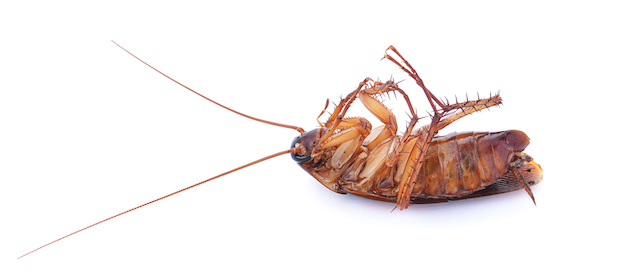83 percent of companies’ digital marketing plans are working for them. Is your pest control business among them? Or are your pest control ideas stuck in the past?
Pest control marketing might be overwhelming to a lot of small business owners, but with the right strategy, you’ll be raking in the pest control leads in no time. All it takes is a glance at fresh new marketing ideas.
Look no further! Check out these pest control marketing strategies to get started!

Cockroach isolated on white background, six legs
1. Focus on Your Website
If there’s one thing you take away from this article, let it be the importance of setting yourself up with an amazing website. Without an awesome website, many of these strategies will be moot.
There are two ways to approach your website: you can DIY it, or you can hire a pro. While many pest control professionals choose to DIY their websites, the benefits of hiring a pro can’t be overstated (read more here for an in-depth look).
The oversaturation of DIY websites might make it seem like you can get along fine that way. And you probably can, but only the pros know how to design a site that’s lead-driven and customer-oriented.
Think of it this way: you know your customers could Google “DIY roach removal” and try their hand at what you do. The reality is they’ll succeed for a month and then the roaches will come crawling back. Pros are pros for a reason.
It’s the same with site design (and, well, anything, really). In this case, your website is an investment in your business—in the literal sense of the word. A good one will drive leads, which will increase your profit.
2. Content Is King
If you want more inbound leads, the solution is simple: create more (and better) content.
This can take a few different forms. The first is a blog. If you don’t already have a blog on your website, that needs to change ASAP!
A blog is a great way to offer value and helpful solutions for your potential (and current!) clients. Not sure what to write about?
How about cataloging the various pests your clients have issues with to help them learn about the enemy? How about offering tips on how to keep pests away? You could even blog about common bug bites and offer help in identifying which critters have infiltrated your client’s homes.
Offering value like this creates trust and loyalty in your audience. When they need a pest control service, you’ll be the first one they’ll call.
On top of building your reputation, your blog is also a great resource for increasing your SEO. Google likes to help its users. When they search the web, Google scours every corner for answers to their questions.
Wouldn’t it be great if the answer was on your website?
3. Local SEO Matters
Here’s the thing about your pest control company. You’re regional. There’s not a huge point in marketing toward potential leads who need pest control services in another state—unless you’re a national business.
That means local SEO matters big time for you. One of the top trending keywords for pest control services? “Pest control near me.”
Consumers trust Google to provide pest control service listings based on their current location. When they pull up those listings, they want to see all the information they need at a glance.
That includes your website, your hours, your contact information, reviews, and even specials you’re running.
For regional businesses, your Google My Business page is essential to keep curated. You should also make sure your ‘Contact’ section on your site is up-to-date and easy to find.
Instant gratification is the norm for consumers today. Don’t make them hunt for your information or have to work too hard to get a quote from you. Because they won’t.
4. Paid Ads Still Work
If you’re not seeing a big ROI on your pest control advertising flyers, don’t be surprised. It’s not that advertising is dead; it’s that the internet has reinvented it.
Your pest control ad is still valuable, but it needs to take on a new form. A digital form.
Enter: pay-per-click (or PPC) advertising. With PPC ads, you only pay for the clicks you receive. You can set a cap for the amount you spend to be sure you don’t go over budget.
Here’s the best part about PPC ads: they usually generate leads from people who are very likely to hire a pest control service. Ad targeting has gotten smarter than ever, and you should use that to your advantage.
5. Offline Marketing Matters for Pest Control
While digital marketing is essential for generating new leads, don’t forget the importance of offline marketing, too. It’s easy to forget about in today’s increasingly digital world.
The reality? People trust their friends. They trust their families.
They even trust strangers on the internet who write reviews.
Referrals still reign supreme in crafting your business’ reputation. Increase your focus on customer service to better your street cred. Claim your Yelp page and take the time to respond to those filing complaints.
It might seem small, but small steps add up to big goals.
6. Social Media
Americans spend a whopping average of 11 hours a day with their noses buried in screens. Some of that can’t be helped; if you work on the computer, you don’t really have a choice. The fascinating part is that, once your target audience steps away from the computer, they pick up their phone.
They do this to browse social media.
You need to be there, providing value and helpful resources for them. Share imagery that links to a current blog post or fun facts about pests. There are tons of ways to strategize your social media campaigns.
The important thing is that you get started and get sharing.
Your Pest Control Marketing in Action
Now that you’ve read up on the essentials of pest control marketing, it’s time to create a plan and put it into action!
Need some additional help? We’ve got your back. Check out our resources articles for more tips and tricks!



